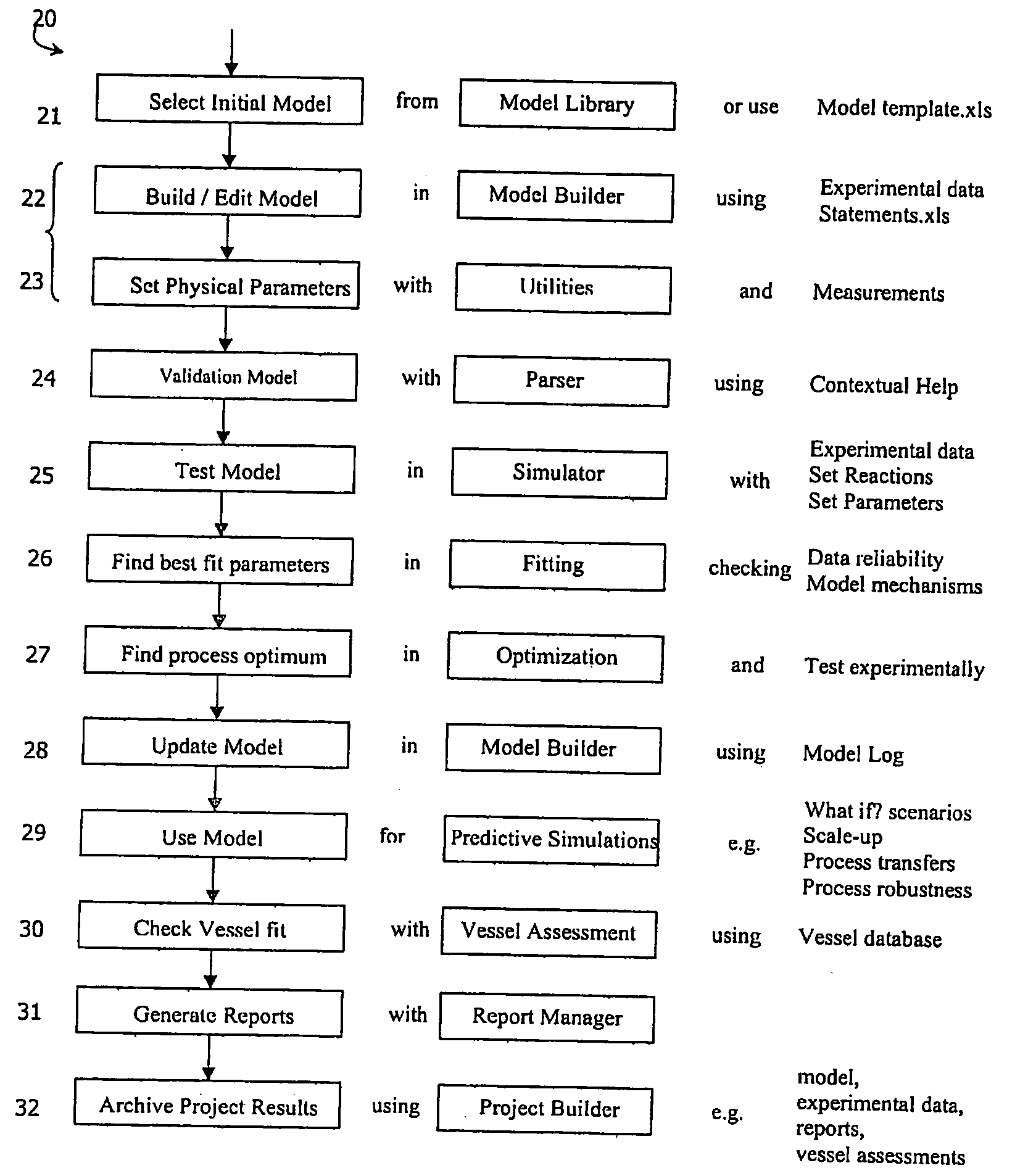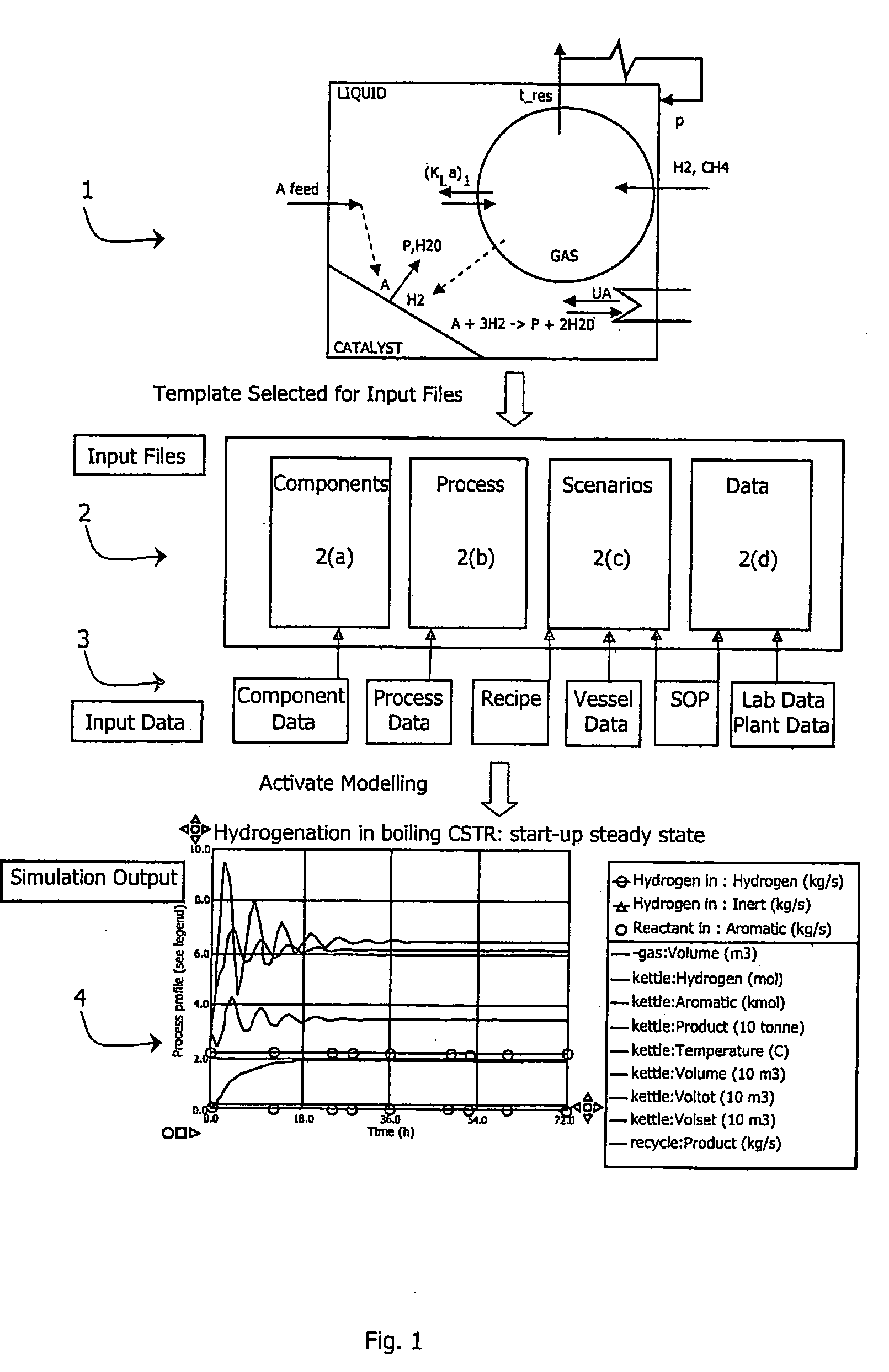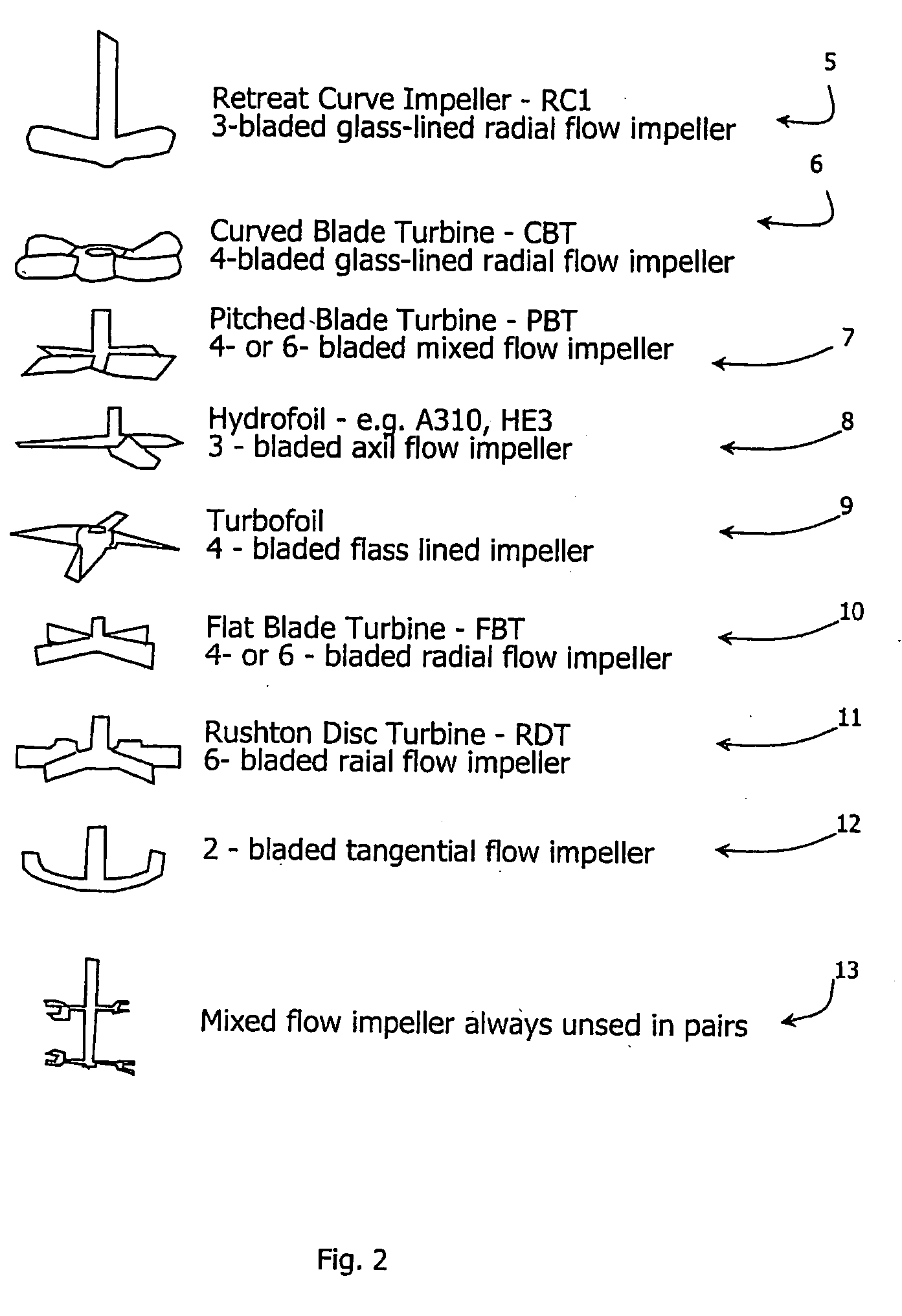Physiocochemical process modelling system
a process modelling and physiocochemical technology, applied in the field of physiocochemical process modelling system, can solve the problems of laboratory experiments by their very nature limited to the small scale, complex physical processes, and significant differences
- Summary
- Abstract
- Description
- Claims
- Application Information
AI Technical Summary
Problems solved by technology
Method used
Image
Examples
Embodiment Construction
[0055] Referring to FIG. 1 aspects of a chemical process are represented diagrammatically by the numeral 1. This diagram shows chemical and heat transfers across liquid, gas, and catalyst phase boundaries. A modelling system of the invention generates with user inputs a set of input files or sheets 2 in spreadsheet format. The files 2 include Components 2(a), Process 2(b), Scenarios 2(c), and Data 2(d) files. Input data 3 for the system includes: [0056] component data for the file 2(a); [0057] process data for the files 2(b); [0058] chemical recipe data for the files 2(c); [0059] vessel characterisation data for the file 2(c); [0060] standard operating procedure (SOP) data for the files 2(c) and 2(d); and [0061] laboratory and plant data for the file 2(d).
[0062] Operation of the modelling system is in response to user activation using the input files 2, and the output is a simulation such as indicated by 4 for a continuous hydrogenation in a boiling reactor from start-up to steady ...
PUM
 Login to View More
Login to View More Abstract
Description
Claims
Application Information
 Login to View More
Login to View More - R&D
- Intellectual Property
- Life Sciences
- Materials
- Tech Scout
- Unparalleled Data Quality
- Higher Quality Content
- 60% Fewer Hallucinations
Browse by: Latest US Patents, China's latest patents, Technical Efficacy Thesaurus, Application Domain, Technology Topic, Popular Technical Reports.
© 2025 PatSnap. All rights reserved.Legal|Privacy policy|Modern Slavery Act Transparency Statement|Sitemap|About US| Contact US: help@patsnap.com



